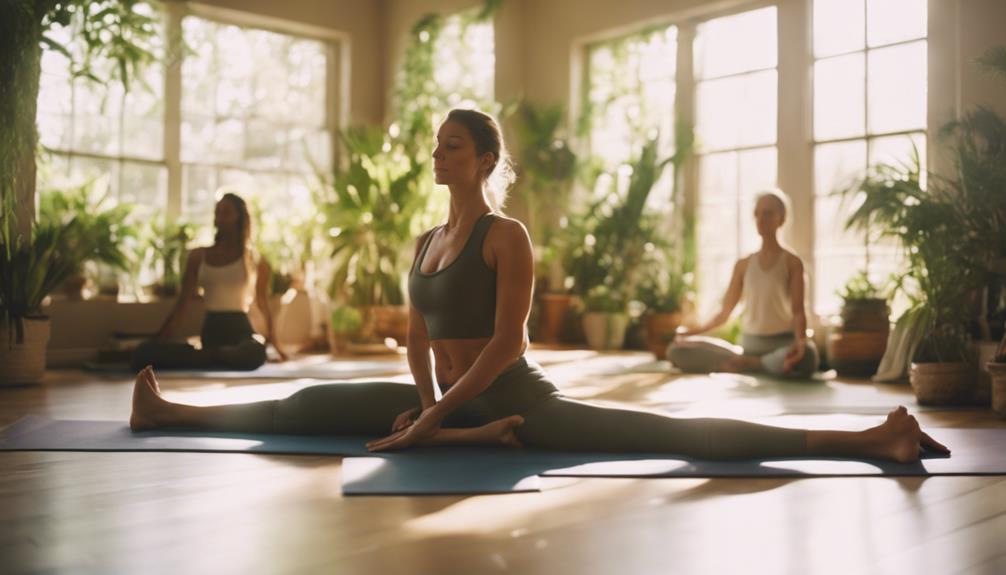How is Pilates Different from Yoga?
In the world of fitness and wellness, two practices often come to the forefront: Pilates and yoga. Both of these disciplines have garnered immense popularity, each offering unique benefits that appeal to different individuals. However, many people find themselves asking, "How is Pilates different from yoga?" This article aims to unravel the mystery surrounding these two practices, providing clarity and insight into their distinctive characteristics, philosophies, and methods. Whether you’re a seasoned practitioner or a curious newcomer, understanding the differences between Pilates and yoga can enhance your fitness journey.
Unraveling the Mystery: How is Pilates Different from Yoga?
At first glance, Pilates and yoga might seem quite similar. Both emphasize breath, movement, and body awareness, but their underlying philosophies and goals set them apart. Yoga, rooted in ancient Indian philosophy, combines physical postures, breathing techniques, and meditation to promote overall well-being and mindfulness. Its primary focus is on achieving balance not only in the body but also in the mind and spirit. On the other hand, Pilates was developed in the early 20th century by Joseph Pilates and is more exercise-oriented, targeting core strength, flexibility, and muscular endurance.
Another key difference lies in the styles of movement. In yoga, poses (asanas) are often held for longer periods, encouraging mindfulness and deep stretching. This practice fosters a connection between breath and movement, allowing practitioners to cultivate inner peace and relaxation. Conversely, Pilates emphasizes controlled, precise movements, often performed on specialized equipment, such as the reformer. The focus is on refined, repetitive exercises that enhance strength, particularly in the core muscles, while promoting overall body alignment.
Moreover, Pilates tends to be more physically rigorous as it engages specific muscle groups with targeted exercises designed to develop strength and stability. While yoga can certainly challenge the body, it also incorporates more restorative and meditative practices. Thus, understanding how Pilates is different from yoga can help individuals tailor their fitness routines to meet their personal goals, whether that be building strength or seeking tranquility.
Stretch, Strengthen, and Sway: Discovering Pilates vs. Yoga!
When it comes to the physical benefits of each practice, the differences become even more pronounced. Pilates is celebrated for its ability to build core strength and improve posture, making it a popular choice for athletes and those recovering from injuries. The exercises focus heavily on the abdominal muscles, back, hips, and pelvic floor, providing a solid foundation for physical activities. Additionally, the use of equipment in Pilates can enhance resistance training, offering a unique way to challenge the body further.
In contrast, yoga is often heralded for its flexibility and relaxation benefits. Many yoga poses stretch multiple muscle groups, promoting not just physical flexibility but also mental agility. The practice encourages practitioners to explore their range of motion while fostering a sense of calm and mindfulness. Through the integration of breath work and meditation, yoga cultivates a holistic approach to health that nurtures both body and mind.
It’s also important to consider the community aspect of each practice. Pilates classes tend to focus on movement and technique, often attracting individuals looking for a workout. Yoga classes, however, can foster a sense of connection among participants, with shared experiences of mindfulness and self-discovery. Understanding the nuances of how Pilates differs from yoga can help you find the right environment that resonates with your personal journey.
In summary, while both Pilates and yoga offer incredible benefits, they cater to different needs and preferences. Understanding how Pilates is different from yoga helps individuals choose the right practice for their goals, whether they seek strength, flexibility, mindfulness, or a combination of these elements. Embracing either or both practices can lead to improved physical health, mental clarity, and overall well-being. So, whether you’re ready to stretch, strengthen, or sway, there’s a space for everyone in the world of Pilates and yoga!
